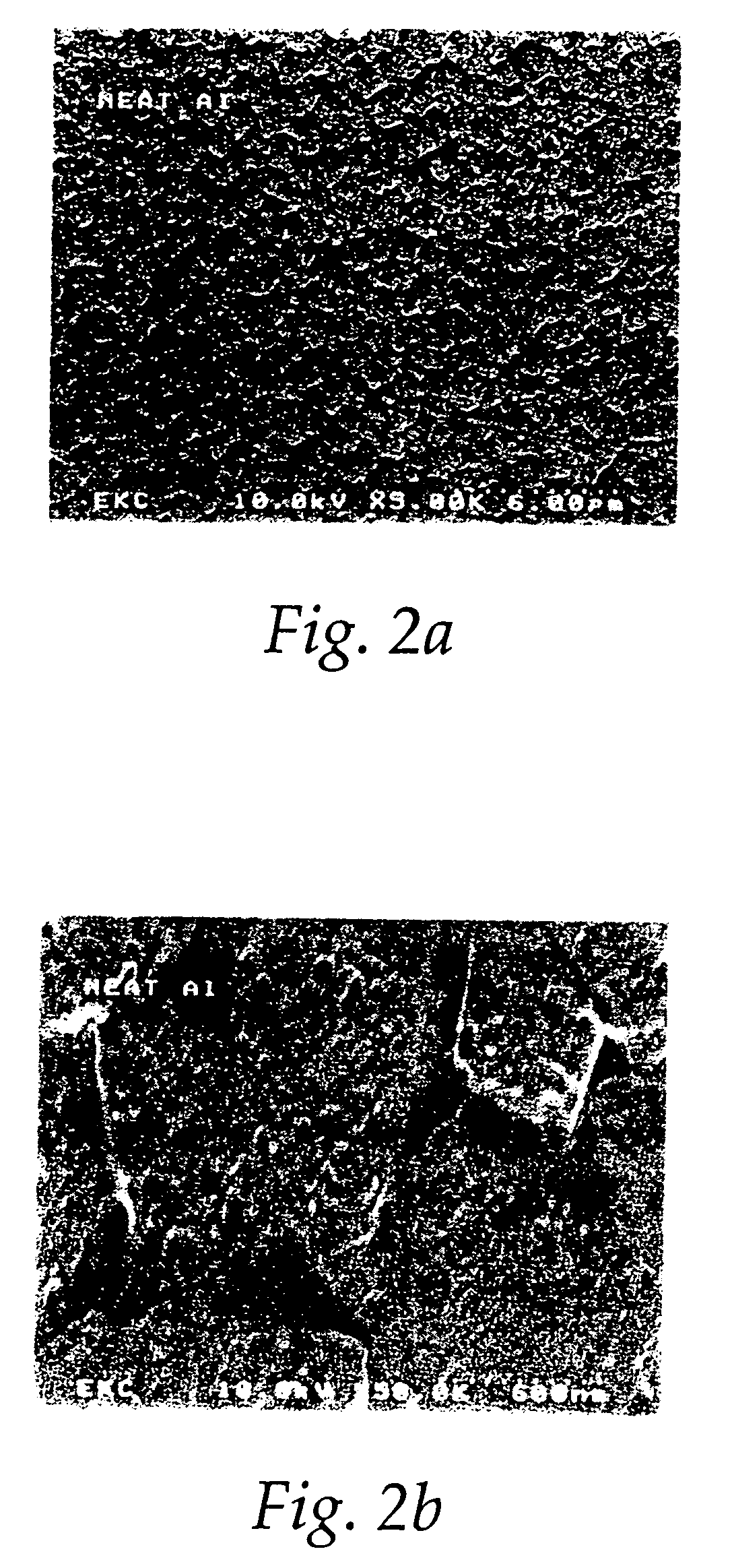Forming a passivating aluminum fluoride layer and removing same for use in semiconductor manufacture
- Summary
- Abstract
- Description
- Claims
- Application Information
AI Technical Summary
Benefits of technology
Problems solved by technology
Method used
Image
Examples
example 1
[0117] A group of cleaning chemistries containing the ingredients of ammonium fluoride, water, one or more amides, such as N,N-dimethylacetamide, N,N-dimethylformamide, 1-methyl-2-pyrrolidinone, N,N-dimethylpropionamide, and dimethyl sulfoxide listed in Table 1 were tested with metal wafers having stacks of TEOS / Ti / TiN / AICu / TiN (from Bottom to Top), etched with Cl2 / BCl3 plasma in a commercially available AMT DPS etcher. The resulting metal wafers with residues were cut into small sample pieces, and then the sample pieces were immersed into the chemistry solutions in Table 9 for cleaning for 5 minutes at room temperature. The sample pieces were taken out, rinsed with deionized water, and dried with a flow of N2. SEM was performed with a Hitachi 4500 FE-SEM for evaluating cleaning and corrosion effects. Residue removal and corrosion effects on metal stack were assessed by visual comparisons and were all ranked on a scale of 1 to 10. The formulations in Table 9 are shown in weight perc...
example 2
[0119] Based on the results in Example 1, N,N-dimethylacetamide and dimethyl sulfoxide were chosen to optimize the cleaning formulations with ammonium fluoride and water. A commercially available LAM TCP9600 etcher with a Cl2 / BCl3 plasma was used for etching metal wafers with a stack of Oxide / Ti / TiN / AlCu / TiN (from bottom to top). The resulting metal wafers with residues were cut into small sample pieces, and the sample pieces were immersed into the cleaning solutions in Table 10 for cleaning for 5 minutes at room temperature. The sample pieces were taken out, rinsed with deionized water, and dried with a flow of N2. SEM was performed with a Hitachi 4500 FE-SEM for evaluating cleaning and corrosion effects. Residue removal and corrosion effects on the metal stack were assessed by visual comparisons and were all ranked on a scale of 1 to 10. pH values, as reported in FIG. 3, were measured with an Orion SA520 meter with glass pH electrode. The formulations in Table 10 are shown in weig...
example 3
[0121] One of the compositions (composition N) from Table 10 was chosen to process metal wafers etched with an AMT DPS etcher with Cl2 / BCl3 plasma. After the dry etching process, heavy residues were formed on these metal wafers, as shown in the representative sample of FIG. 4. The metal wafers with the residues were cut into small sample pieces, and the sample pieces were immersed into the chosen chemistry solution for removing the heavy residues for 3, 5 and 10 minutes at room temperature. Composition N could clean the residues completely at 5 minutes and beyond but could not clean the residues completely at 3 minutes (FIGS. 5A-5C). The sample pieces were then taken out, rinsed with deionized water, and dried with a flow of N2. SEM was performed with a Hitachi 4500 FE-SEM for evaluating cleaning and corrosion effects.
[0122] Photo-removal and residue-removal technology will further evolve to meet the needs of 300 mm wafer processing. The SEZ tool and other new types of equipment ar...
PUM
| Property | Measurement | Unit |
|---|---|---|
| Fraction | aaaaa | aaaaa |
| Fraction | aaaaa | aaaaa |
| Fraction | aaaaa | aaaaa |
Abstract
Description
Claims
Application Information
 Login to View More
Login to View More - R&D
- Intellectual Property
- Life Sciences
- Materials
- Tech Scout
- Unparalleled Data Quality
- Higher Quality Content
- 60% Fewer Hallucinations
Browse by: Latest US Patents, China's latest patents, Technical Efficacy Thesaurus, Application Domain, Technology Topic, Popular Technical Reports.
© 2025 PatSnap. All rights reserved.Legal|Privacy policy|Modern Slavery Act Transparency Statement|Sitemap|About US| Contact US: help@patsnap.com



